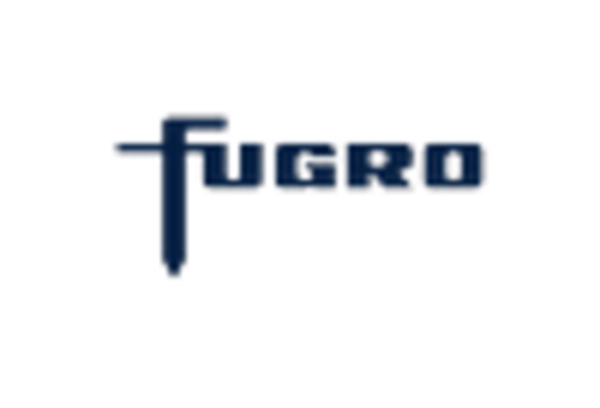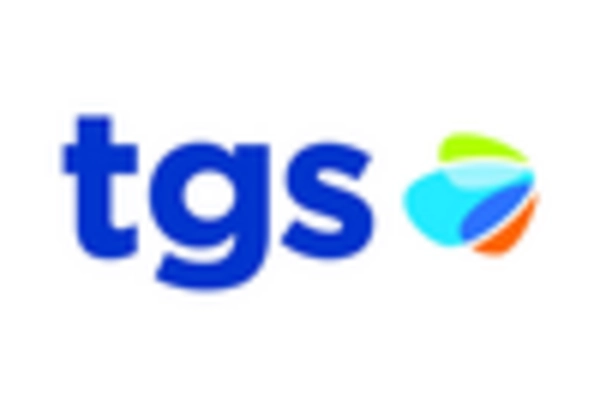The Offshore Seismic Survey Market is currently characterized by a dynamic competitive landscape, driven by technological advancements and increasing demand for energy exploration. Key players such as Schlumberger (US), CGG (FR), and PGS (NO) are strategically positioning themselves through innovation and partnerships. Schlumberger (US) has focused on enhancing its digital capabilities, integrating advanced data analytics into its seismic survey operations, which appears to bolster its competitive edge. Meanwhile, CGG (FR) has been actively pursuing regional expansion, particularly in emerging markets, thereby diversifying its operational footprint. PGS (NO) emphasizes sustainability in its operations, aligning with global energy transition trends, which may enhance its market appeal among environmentally conscious clients.
The business tactics employed by these companies reflect a moderately fragmented market structure, where localized strategies and supply chain optimization play crucial roles. Companies are increasingly localizing their manufacturing processes to reduce costs and improve service delivery. This localized approach, combined with strategic partnerships, allows firms to enhance their operational efficiency and responsiveness to market demands, thereby shaping a competitive environment that is both collaborative and competitive.
In August 2025, Fugro (NL) announced a significant partnership with a leading renewable energy firm to provide integrated geotechnical and geophysical services for offshore wind projects. This collaboration not only underscores Fugro's commitment to diversifying its service offerings but also positions it favorably within the growing renewable energy sector. The strategic importance of this partnership lies in its potential to leverage Fugro's expertise in seismic surveys to support the burgeoning offshore wind market, thereby enhancing its competitive positioning.
In September 2025, TGS (NO) launched a new suite of advanced seismic imaging technologies aimed at improving data accuracy and reducing survey times. This innovation reflects TGS's ongoing commitment to technological advancement and operational efficiency. By enhancing its service capabilities, TGS is likely to attract a broader client base, particularly in regions where rapid data acquisition is critical for decision-making in energy exploration.
In October 2025, BGP Inc. (CN) expanded its operations into the South American market, establishing a new regional office to better serve local clients. This strategic move indicates BGP's intent to capitalize on the growing demand for seismic surveys in emerging markets. By localizing its presence, BGP may enhance its responsiveness to client needs and strengthen its competitive position in a region that is increasingly important for energy exploration.
As of October 2025, the Offshore Seismic Survey Market is witnessing trends that emphasize digitalization, sustainability, and the integration of artificial intelligence. These trends are reshaping competitive dynamics, as companies increasingly form strategic alliances to enhance their technological capabilities and service offerings. The shift from price-based competition to a focus on innovation and technology is evident, suggesting that future competitive differentiation will hinge on the ability to deliver reliable, cutting-edge solutions that meet evolving client demands.


















Leave a Comment